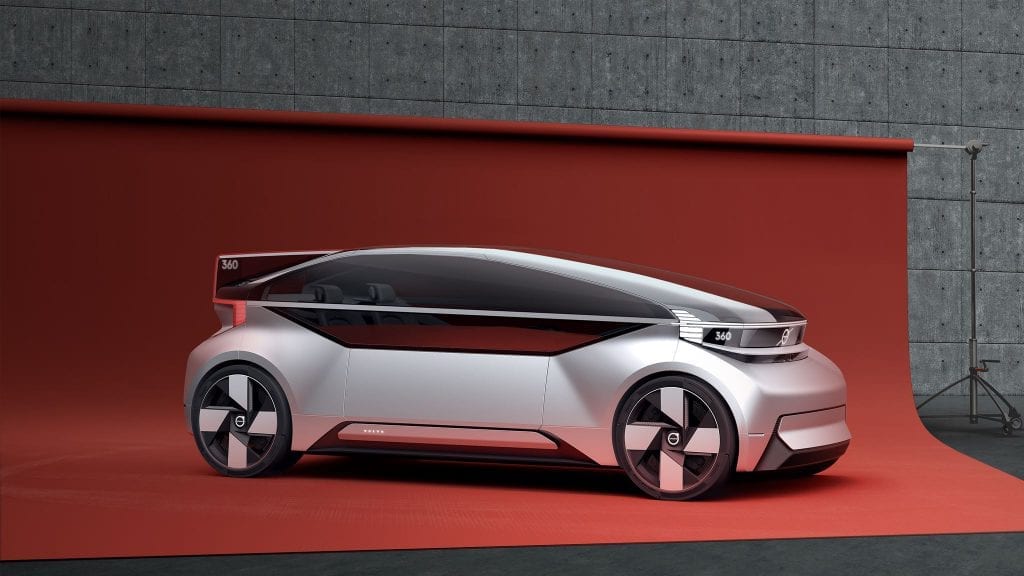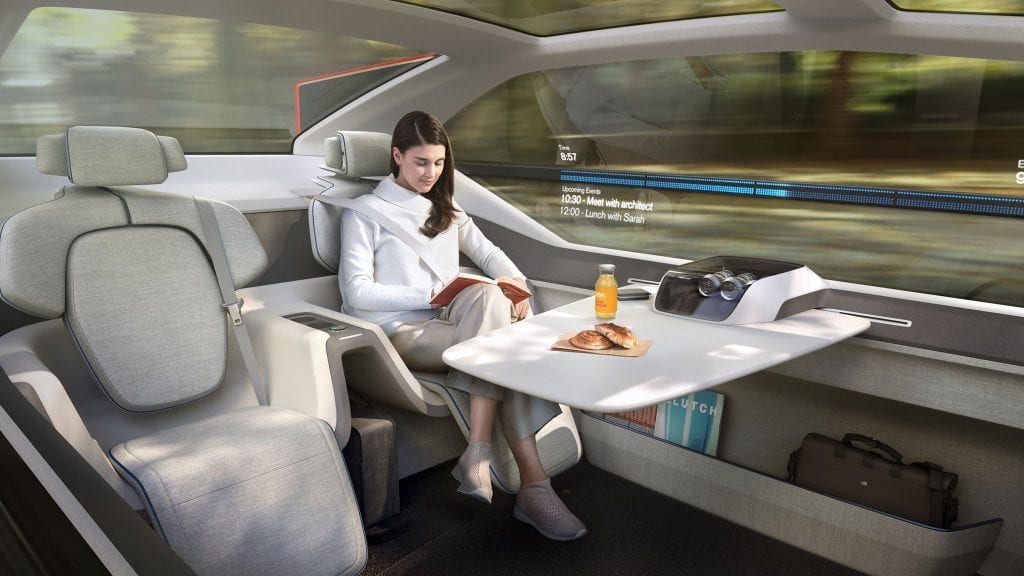Autonomous
The Volvo 360c Electric: Autonomous and Connected
It’s official – Volvo Cars just presented its fully electric luxurious ‘robo-taxi’ this Wednesday, naming it 360c. With this, the Swedish car manufacturer is definitely in the race towards making autonomous vehicles fully driverless. The 360c is Level 5 autonomous (“steering wheel optional”): No human intervention is required at all.
According to Volvo, the new driverless vehicle is meant to expand its customer base – mostly by tapping into the inter-city taxi market and the fact that there are passengers travelling as far as 300 kilometers, allowing this vehicle to challenge short-haul airlines as well as train operations.

The Volvo 360c
Where Function Meets Design
Aside from its function, the 360c by Volvo is really amazing in terms of design. As the manufacturer describes the vehicle, it is “personal, comfortable and convenient”, which are three key features for a vehicle that is planned for the distant future, where fully autonomous vehicles are meant to be the answer to personal mobility needs.


With several mood settings that are designed to suit different needs and tastes, you can relax, nap or even work in the Volvo 360c. The vehicle is fully mobile and mimics a fully-connected meeting place and workspace for getting your things done on the move. In terms of its size, it combines the one of Volvo’s flagship XC90 luxury SUV with an updated and tech-focused design, featuring blue light panels that show its an autonomous car.
If you want to nap, though, or if you are traveling overnight – you should know that the 360c is quiet and can deliver you to your final destination in a comfy bed that is designed within the vehicle.
A Word or Two About Safety
As an autonomous vehicle, the 360c by Volvo also introduces a proposal for the standardised communications system that will allow other road users and autonomous vehicles to understand what the vehicle is going to do next. According to many, such standardized system can play a vital role in making this vehicle (and the ones similar to it) a concept that transforms to a reality.
Meant to make travel sustainable, the 360c is fully electric and fully autonomous. This results in a smooth ride that Volvo even compared to the one in an aircraft, mentioning that the 360c comes “without any delays or baggage checks”.
As such, the Volvo 360c’s main purpose is to directly rival the local flight solutions – getting the passengers directly to their destination while avoiding check-ins, queues, flight delays, security checks and everything else that is part of air travel.
Eliminating Fatal Crashes and Allowing Passengers to Arrive to their Destination Safely
According to a lot of research, driverless cars are on the verge of eliminating fatal crashes on the roads – mostly because nearly all of them are caused by human error. The 360c, however, doesn’t mean that Volvo is stripping out the safety systems – instead, Volvo plans to integrate even better safety technologies in its driverless fleet in the long-term.
Robin Page, who is the senior vice-president of design at Volvo, commented that as technology and infrastructure develops, cars might be able to do longer trips. This way, they will travel at high speeds, taking a further chunk of the air market
“If we see dedicated lanes on roads for autonomous vehicles, then they could ‘platoon’ together at much higher speeds than when they share the road with conventional cars.”
The president and CEO of Volvo, Hakan Samuelsson, says that the 360c highlights the change that is coming to the market, adding:
“Change is coming but it will happen gradually with driverless cars mixing with conventional ones.A lot of safety information is communicated just by being able to see a driver’s eyes. It’s important to maintain and relate that information but it has to be done in a uniform way.”
He also noted that the 360c was “not just a vision of what could be – but a core business idea for Volvo.”
Meanwhile, Volvo is working on other autonomous vehicles that would align with Uber’s and Lyft’s plans. However, the chief executive Samuelsson confirmed that they “won’t be as futuristic as the 360c.”
More Details to be Announced Soon
Volvo’s new autonomous vehicle is definitely a confirmed design. However, there are more details which will be announced soon. In times when tech companies like Uber and Waymo are pouring money in the autonomous (driverless) market, Volvo’s new design can easily enter the list of prototypes.
The Volvo 360c is planned to hit the roads by the 2030s. Until then, the company will remain focused on meeting the challenges of electric and self-driving cars – and apparently has the funds and technology to do so.























